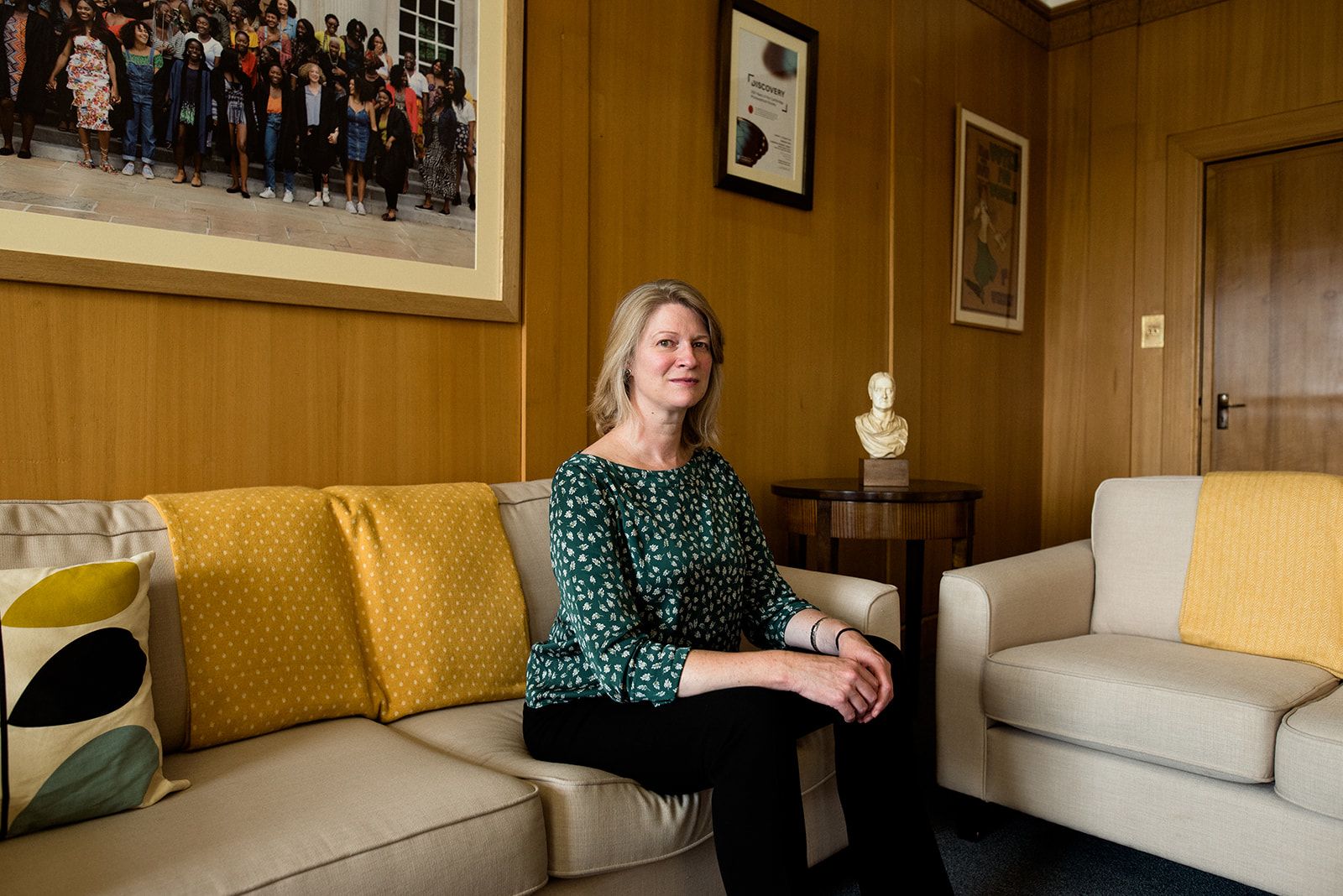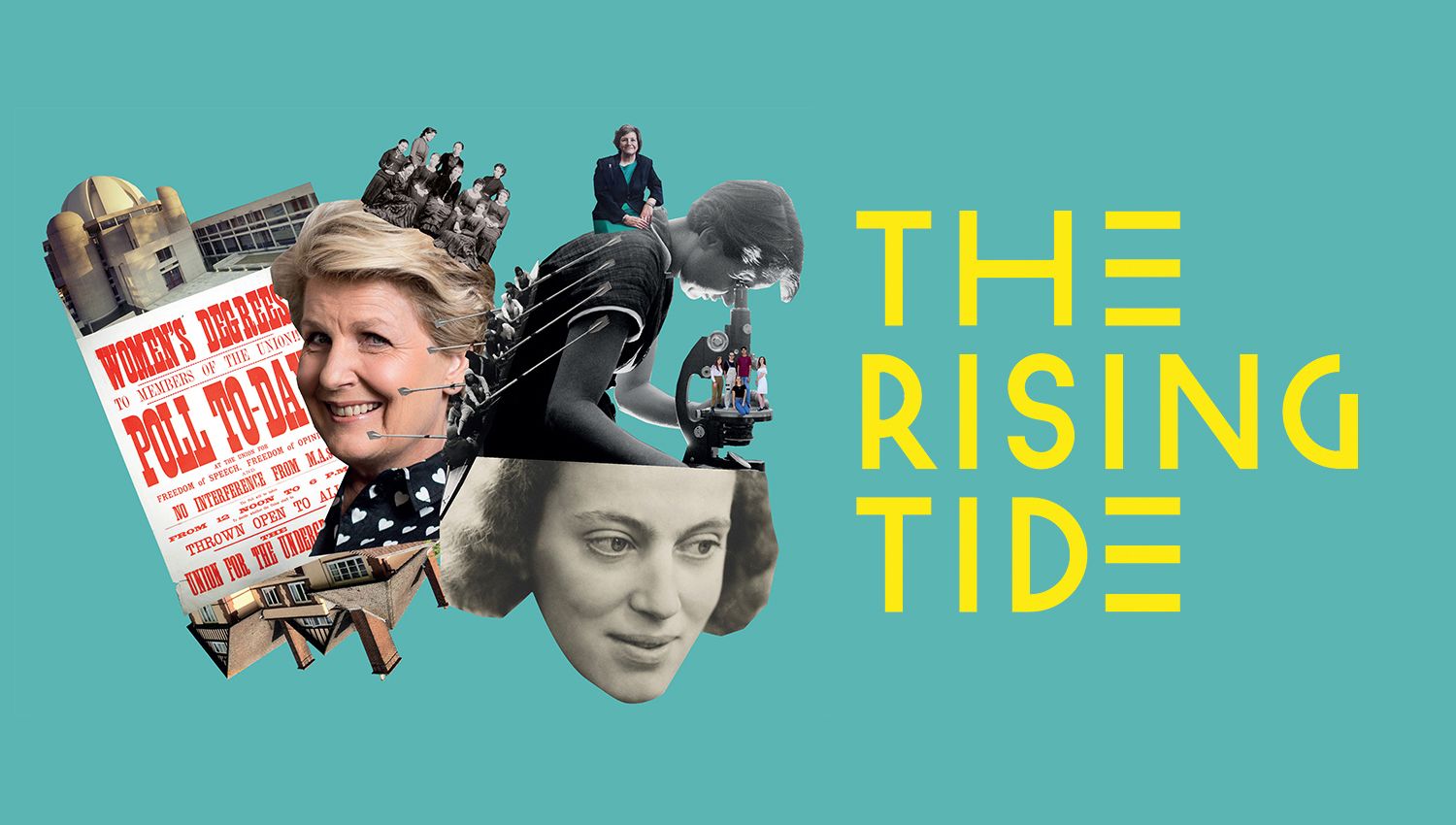The Rising Tide:
Women at Cambridge
#WomenAtCambridge
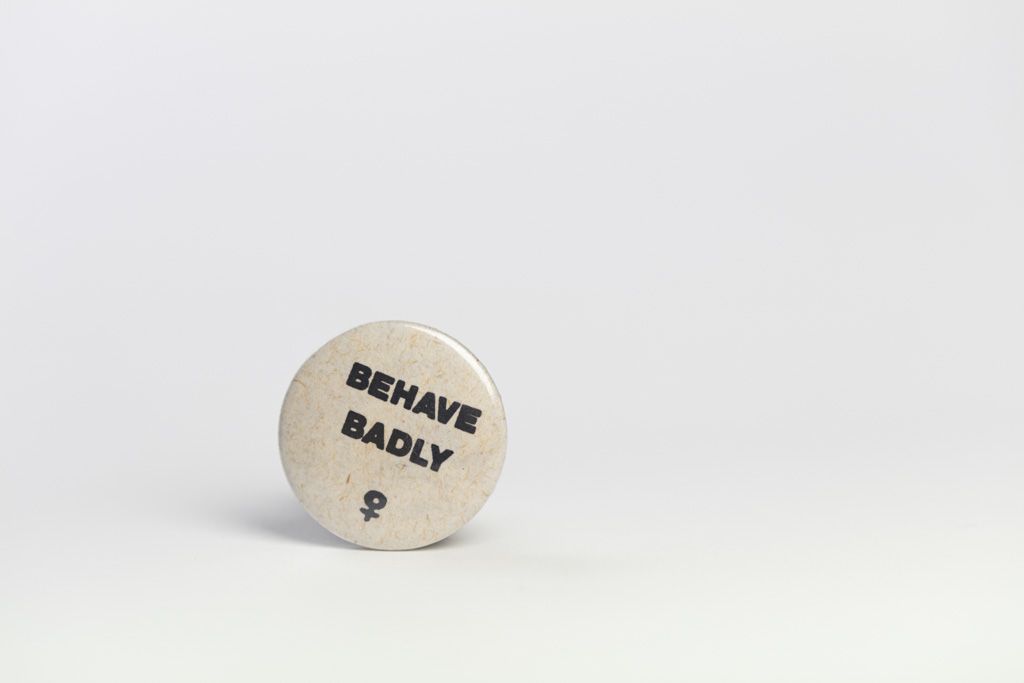
1869

Emily Davies establishes Girton College. It was the first women’s college at Cambridge, and the first in Britain to offer residential higher education for women. But Cambridge University did not grant degrees to women until the late 1940s, the last British university to do so
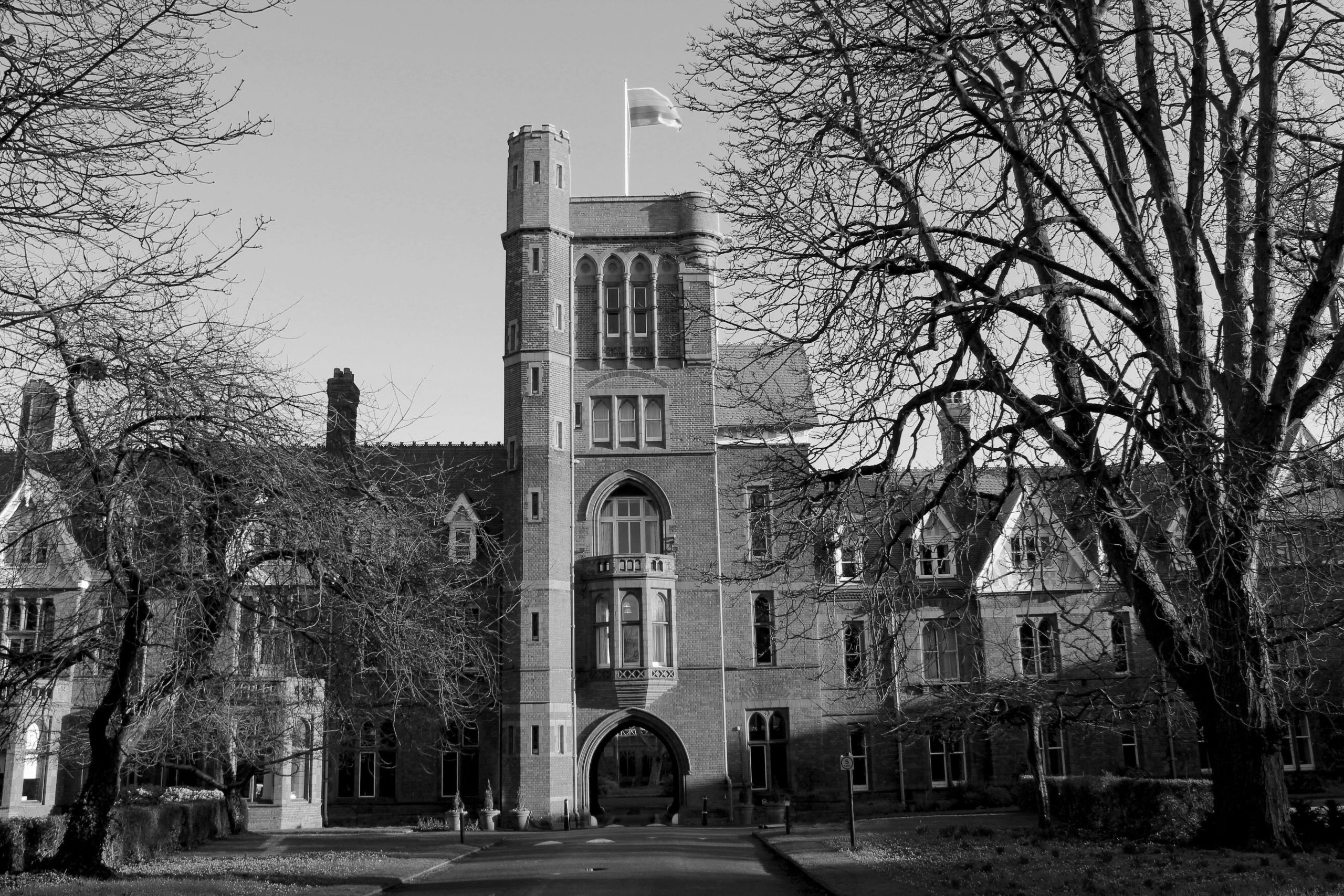
1897

A vote on women getting degrees turns into a riot at Cambridge University
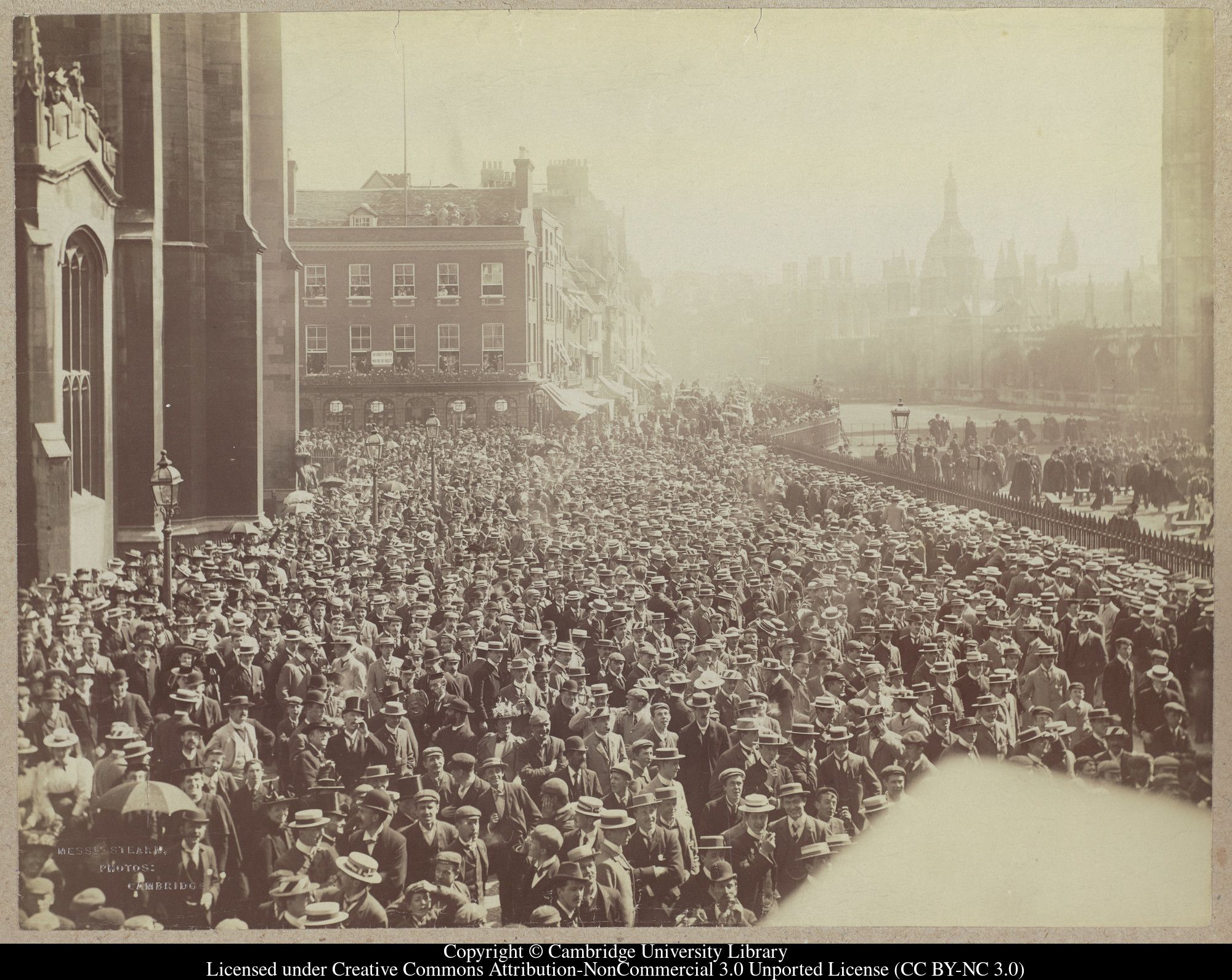
1948

The first female recipient of a Cambridge degree was the Queen Mother, who received an honorary degree
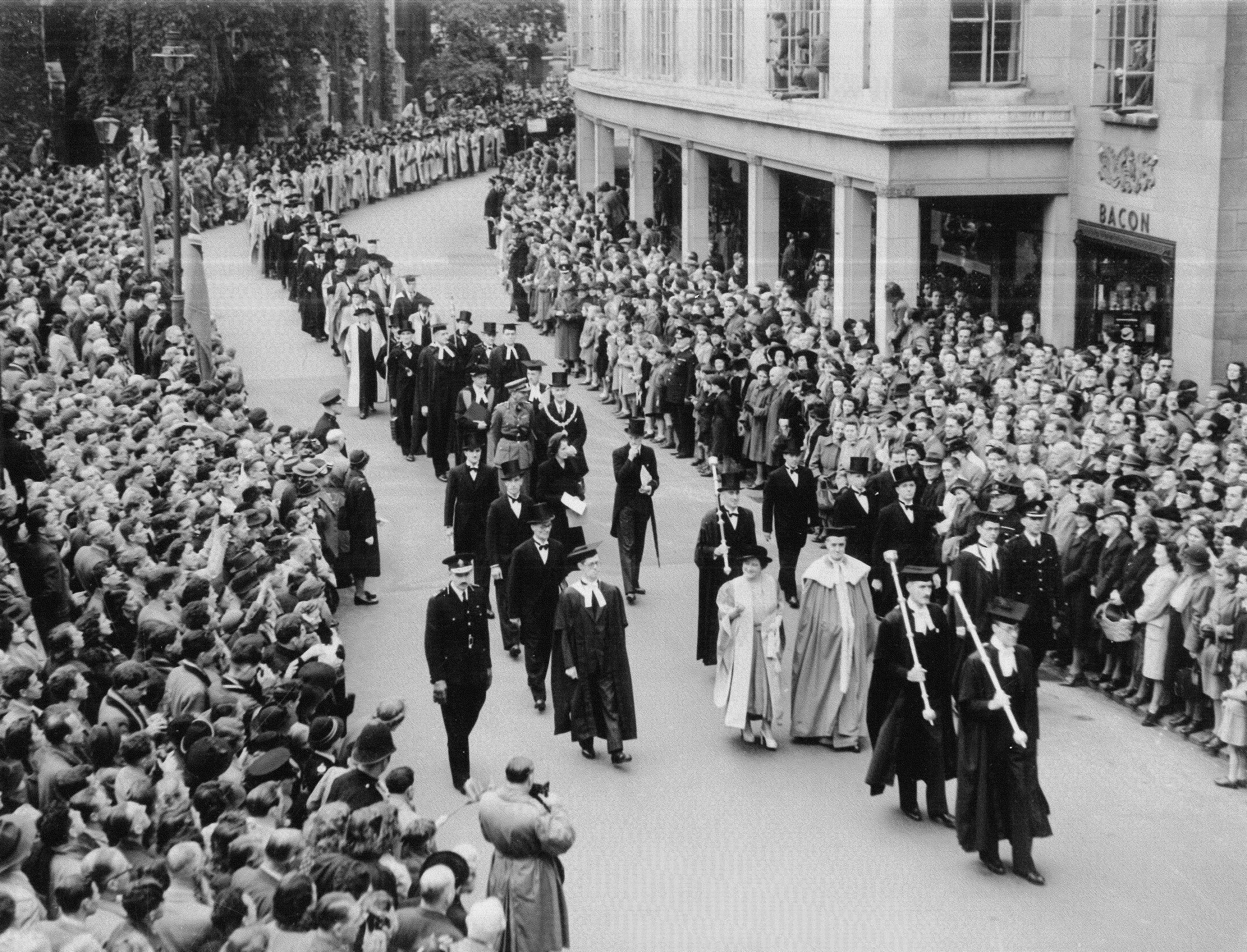
2019

For 150 years, female researchers, academics and students at Cambridge University have been changing the world around us
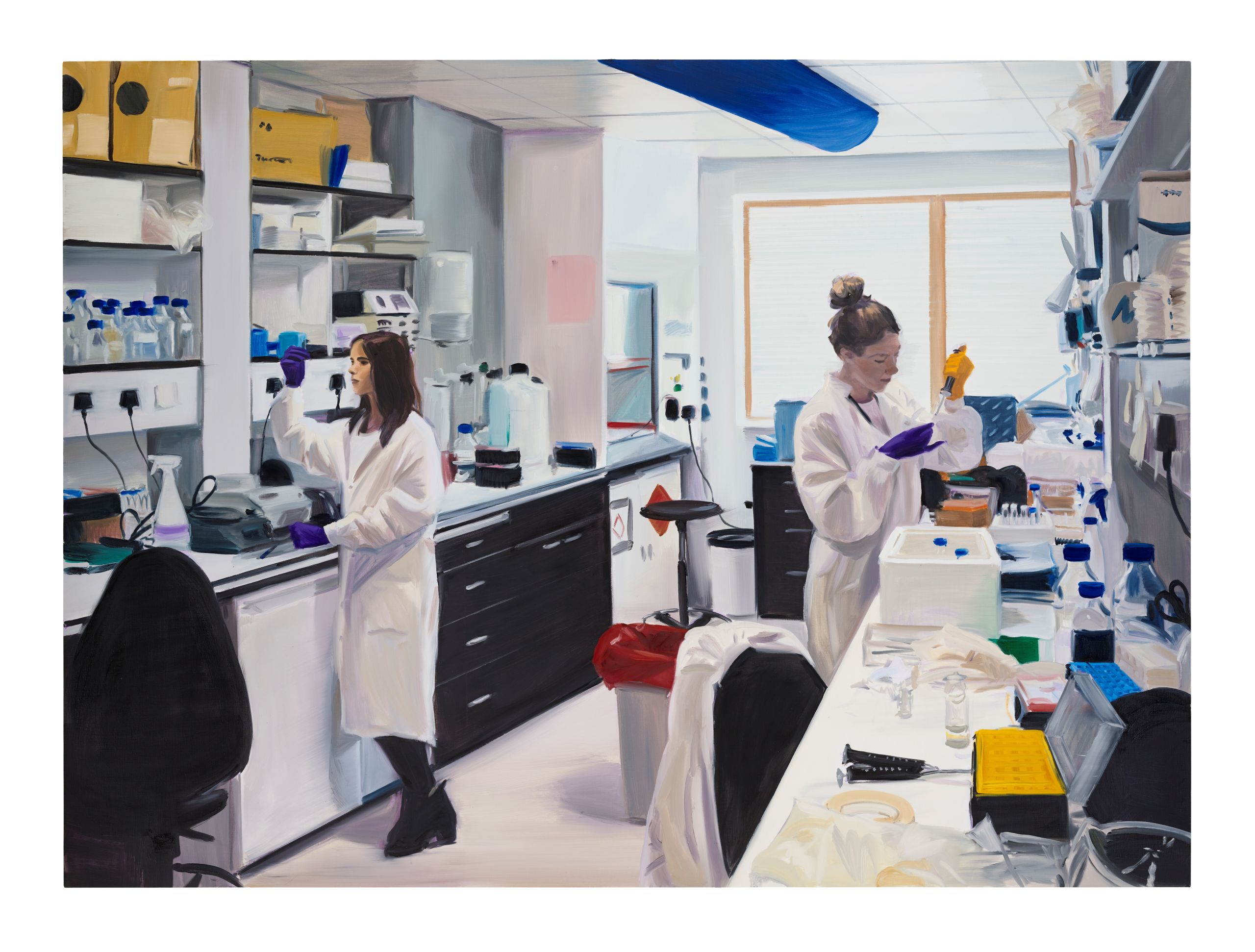
The impact of women at Cambridge is incalculable.
From brilliant scholarship and notable firsts, to activism and disruptive thinking, Cambridge’s women have shaped the University of Cambridge – just as much as it has shaped them.
Cambridge University Library is sharing the unique stories of women who have studied, taught, worked and lived at the University in a new, free exhibition The Rising Tide: Women at Cambridge, which runs from October 14, 2019-March 2020.
Curated by Dr Lucy Delap and Dr Ben Griffin, The Rising Tide focuses on the lived experiences of women at the University, the ongoing fight for equal educational rights, recognition, and inclusion in university activities, and the careers of some of the women who shaped the institution – from leading academics to extraordinary domestic staff and influential fellows’ wives.
The exhibition will showcase the history of women at the University, the persistent marginalisation they were subject to, and the ongoing campaigns for gender justice and change since the establishment of Girton College in Cambridge in 1869, the first residential university establishment for women in the UK.
Visitors will have the opportunity to explore rarely-seen collections from across the University and colleges. Through a mix of costume, letters and audio-visual material, little-known stories of individual women will be brought to life.
As another major strand of the Women at Cambridge celebrations, more than two dozen portraits of extraordinary women who have influenced the history of the University of Cambridge have lined the walls of the University Library’s historic North and South Galleries.
From Nobel Prize winners and trailblazing Baronesses, to student activists and influential lecturers – a variety of historic and newly-commissioned portraiture and photography captures the incredible achievements and fascinating stories of women at Cambridge over centuries.
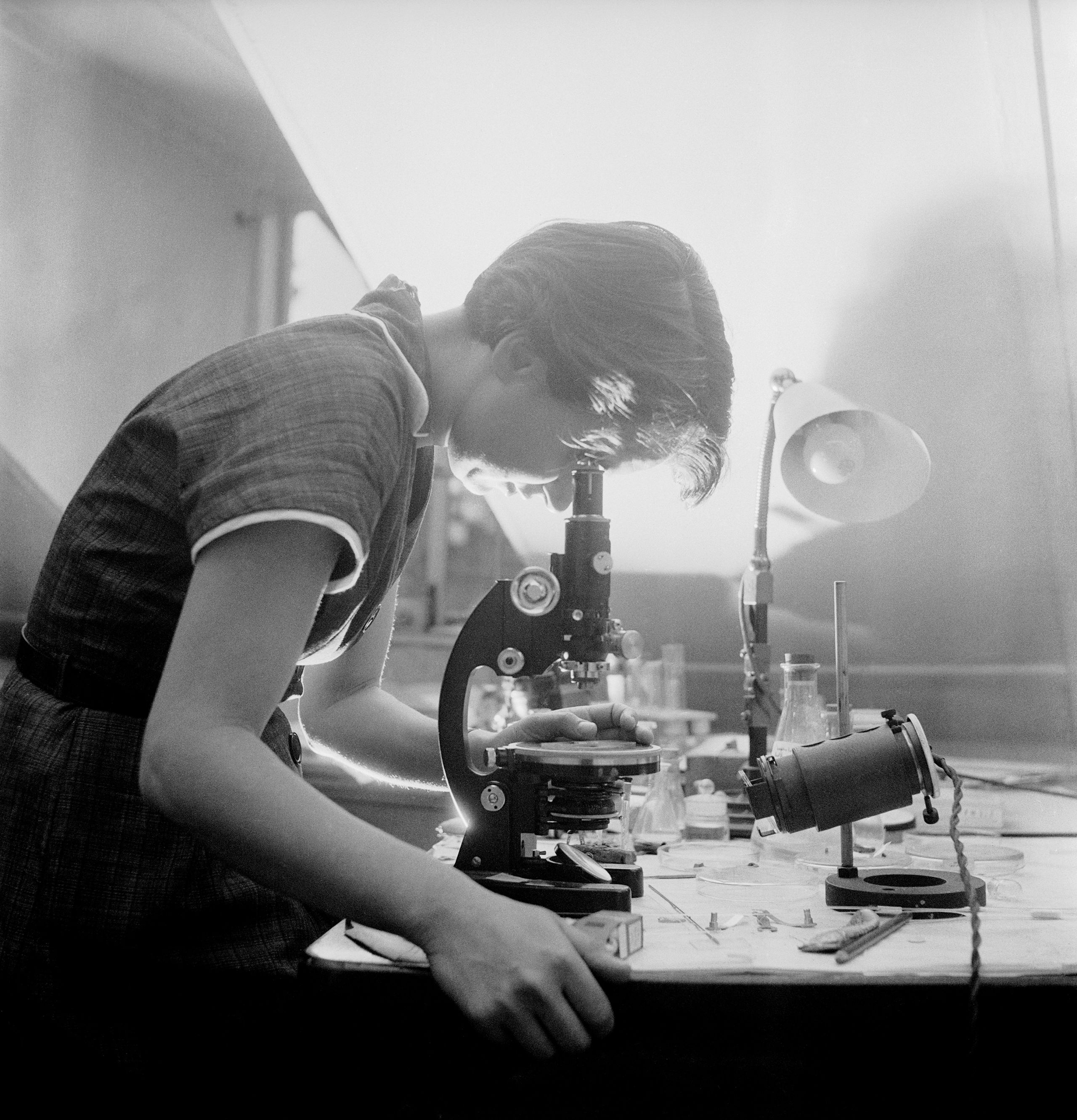
Rosalind Franklin was a central figure in one of the most important scientific advances of the 20th century – the discovery of the structure of DNA. Her work was critical to James Watson and Francis Crick’s discovery of the double helix – and their subsequent Nobel Prize win with Maurice Wilkins in 1962, following her death in 1958. Photo: Museum of London.
Rosalind Franklin was a central figure in one of the most important scientific advances of the 20th century – the discovery of the structure of DNA. Photo: Museum of London.
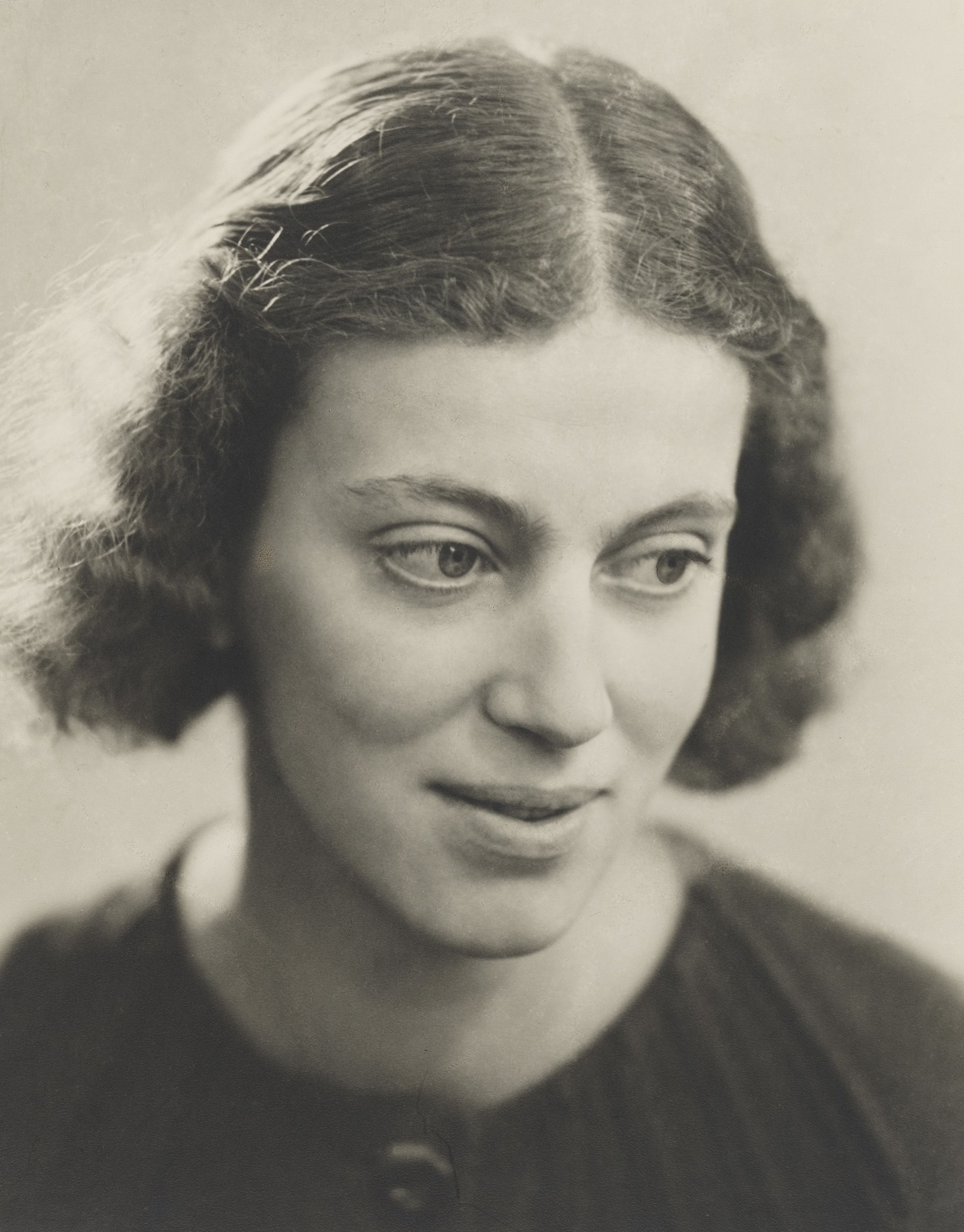
Winner of the Nobel Prize in Chemistry in 1964 – becoming only the third woman to do so – Dorothy Hodgkin was a pioneering scientist throughout much of the 20th century. To date she is the only British female Nobel laureate recognised for an outstanding contribution to science. Photo: Courtesy of the National Portrait Gallery.
Winner of the Nobel Prize in Chemistry in 1964, Dorothy Hodgkin was a pioneering scientist throughout much of the 20th century. Photo: Courtesy of the National Portrait Gallery.
"There was a question mark about their intellectual character. Are women's brains the same as men's? Can they absorb information in the same way of lectures and essays? Do they have the intellectual power to be here?"
Dr Lucy Delap on the prejudices surrounding the first women students at Cambridge
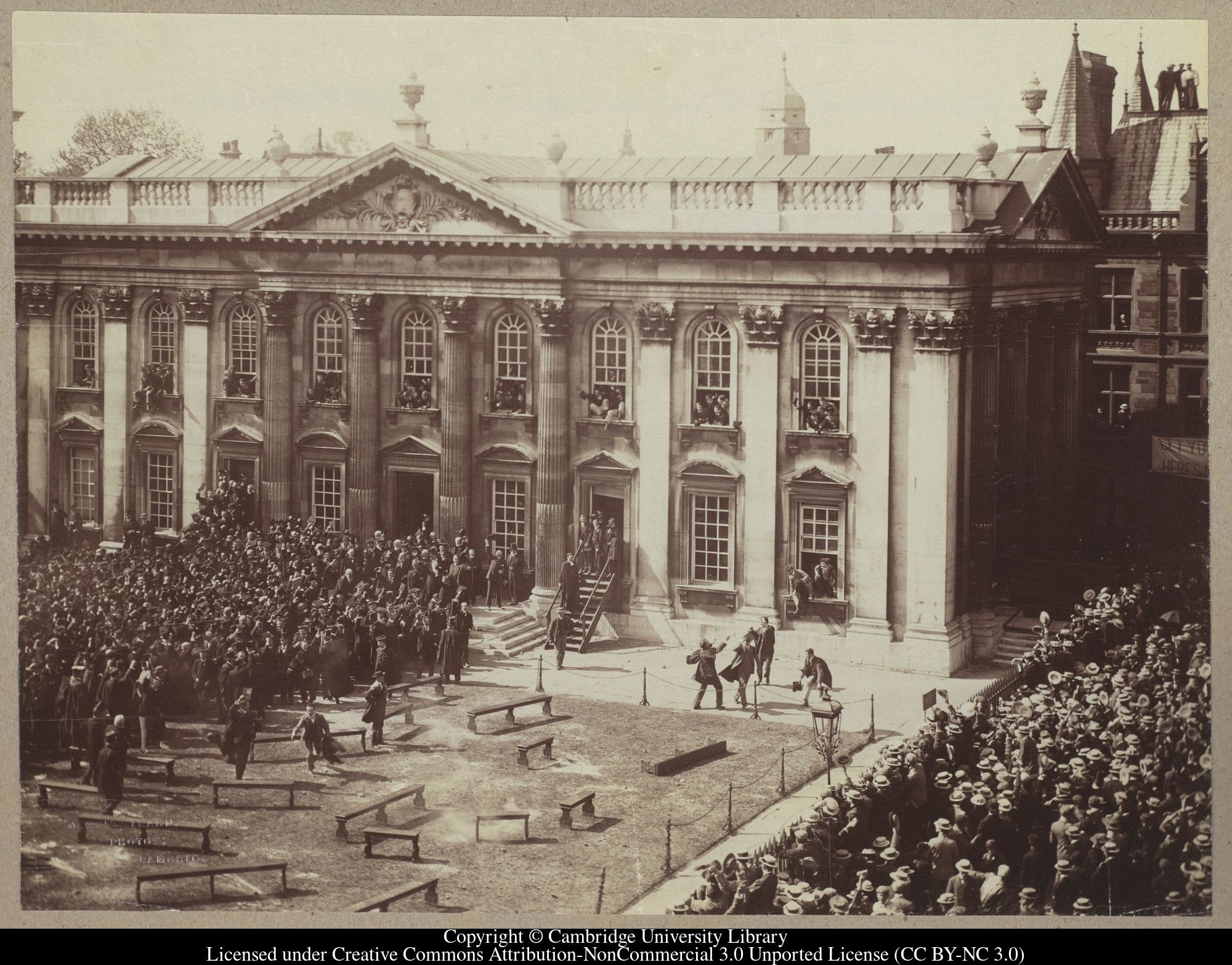
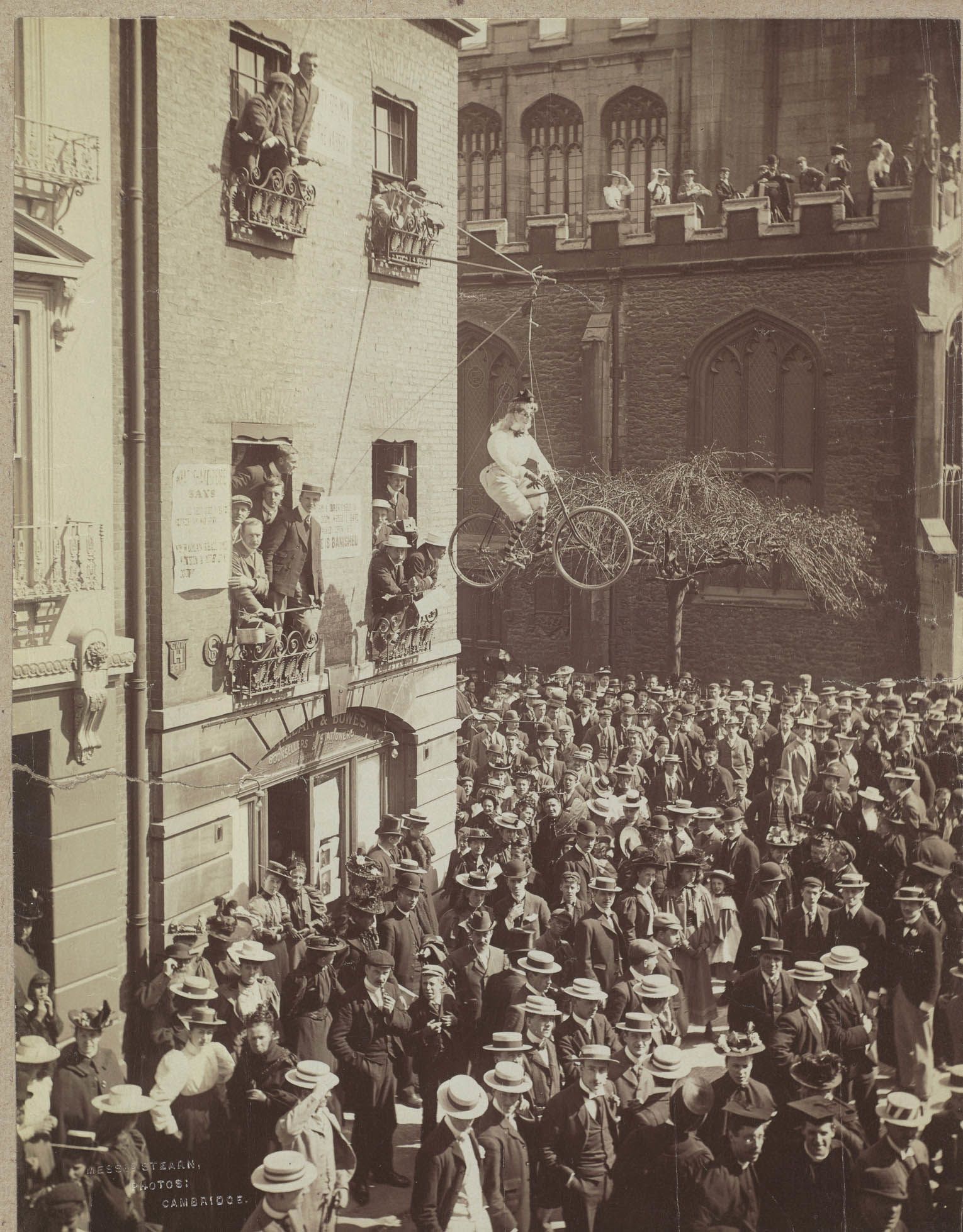
Campaigning in the build-up to the 1897 vote was particularly vicious among undergraduate men. Here an effigy of a female undergraduate hangs from the first floor of what is now the Cambridge University Press book shop.
1897: An effigy of a female undergraduate hangs from the first floor of what is now the Cambridge University Press book shop.
From the founding of the first women’s college to the present day, the experience of women at Cambridge has differed greatly from their male counterparts.
"Though Girton College was established especially to give women the opportunity to study at the University, there were still many barriers that women faced – the first female students were required to ask permission to attend lectures, were not allowed to take exams without special permission, and usually had to be accompanied by chaperones in public until after the First World War.
"It was still not until 1948 that Cambridge began to offer degrees to women – the last of the big institutions in the UK to do so.
"Through The Rising Tide we hope to illustrate an all-encompassing picture of the incredible fight for gender equality within the University, while portraying the fascinating journeys of some of the militant, cussed and determined women of our institution too.”
Dr Lucy Delap, historian, and Fellow of Murray Edwards College
The Rising Tide illuminates the deep opposition and oppression women faced, including the efforts made to keep women out of student societies, the organised campaigns to stop women getting degrees, and the hostility faced by women trying to establish careers as academics.
Surviving fragments of eggshells and fireworks illustrate the violent opposition to giving women degrees during the vote on the subject in 1897, as does the note written by undergraduates apologising for the damage that had been done to Newnham College during the riot of 1921.
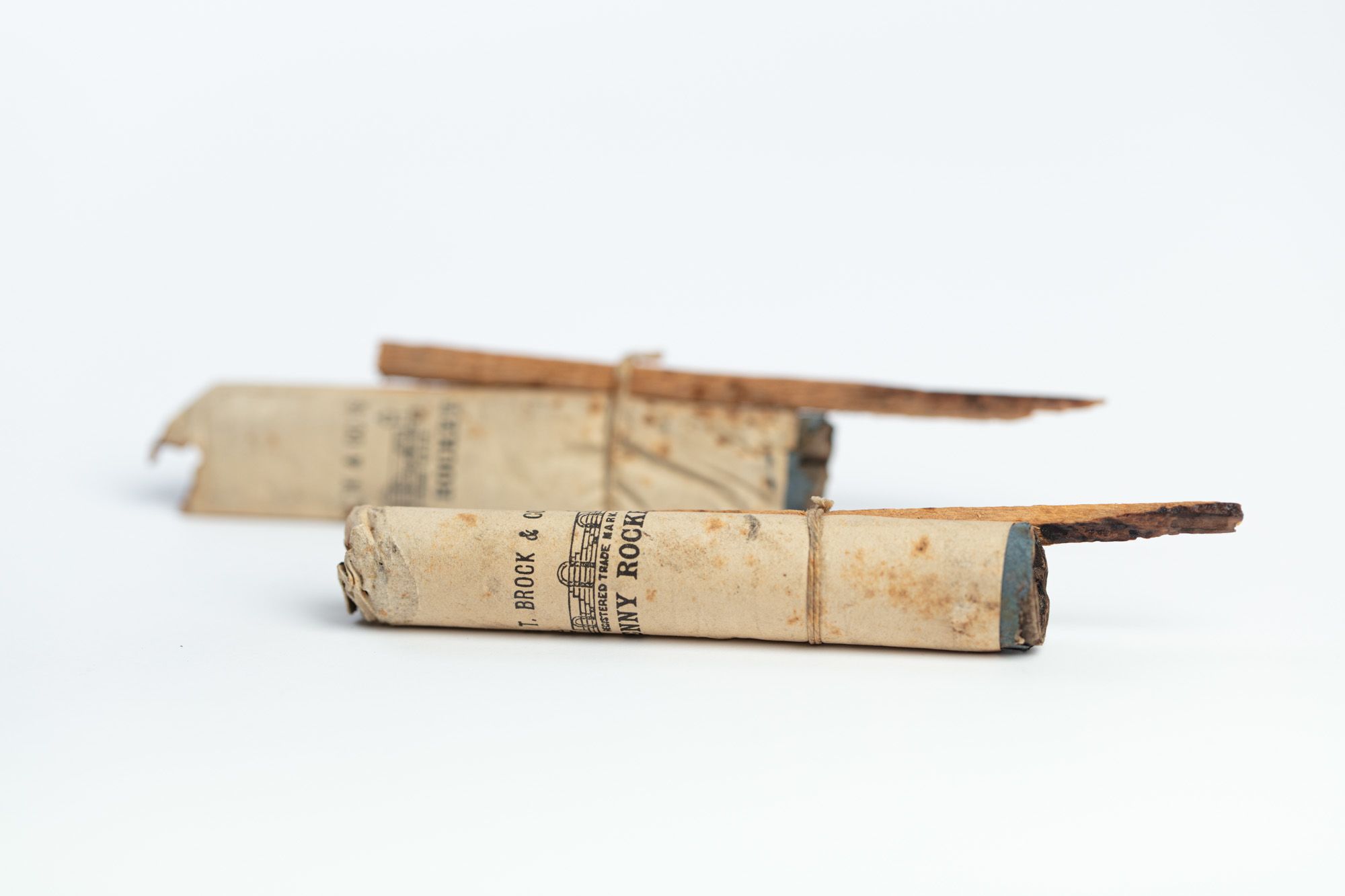
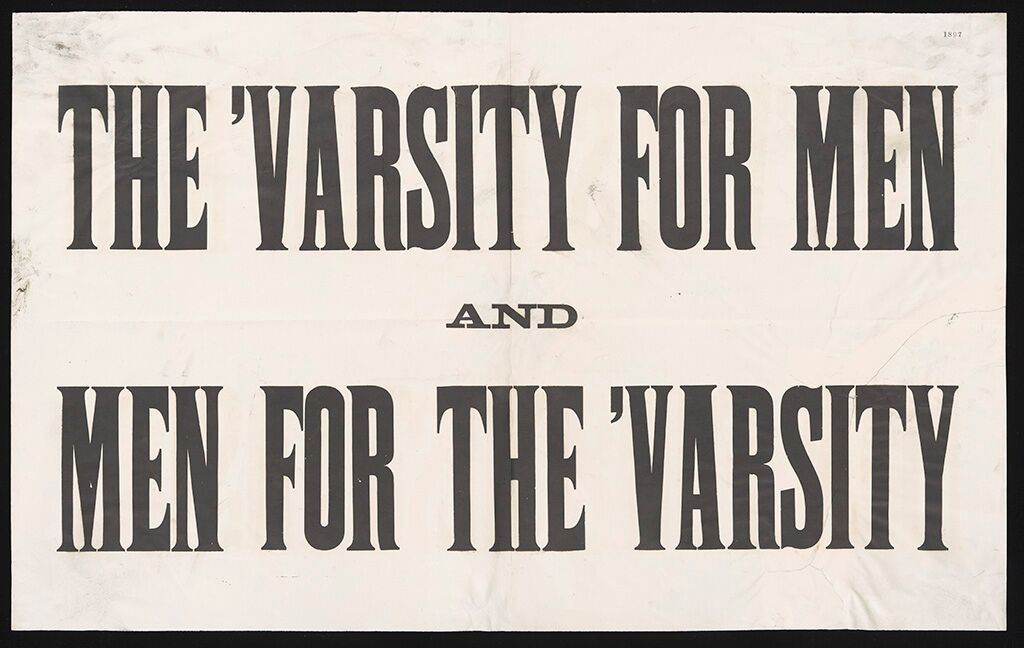
Posters from 1897 displayed opposing views on the battle to admit female students to Cambridge degrees.
Posters from 1897 displayed opposing views on the battle to admit female students to Cambridge degrees.
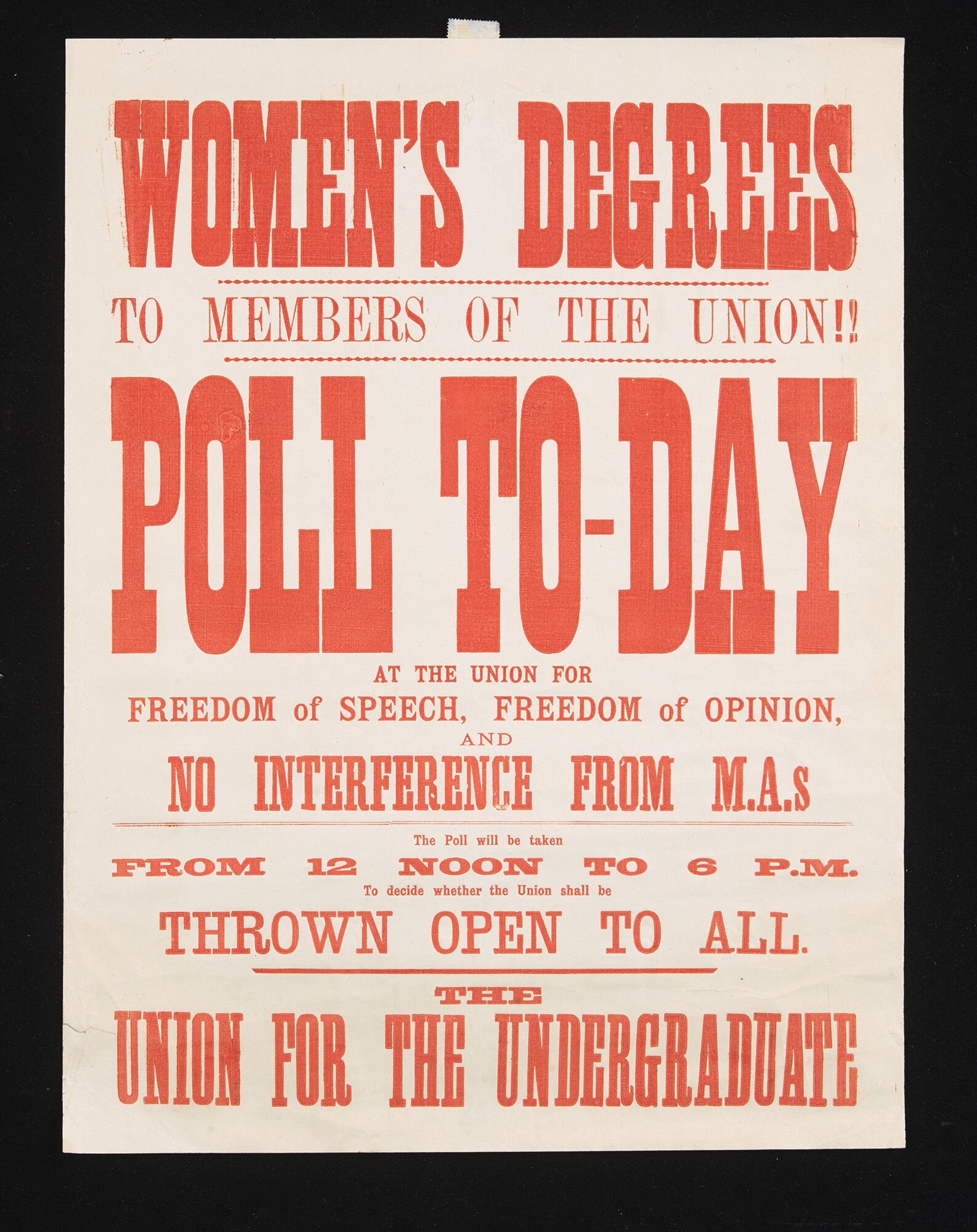
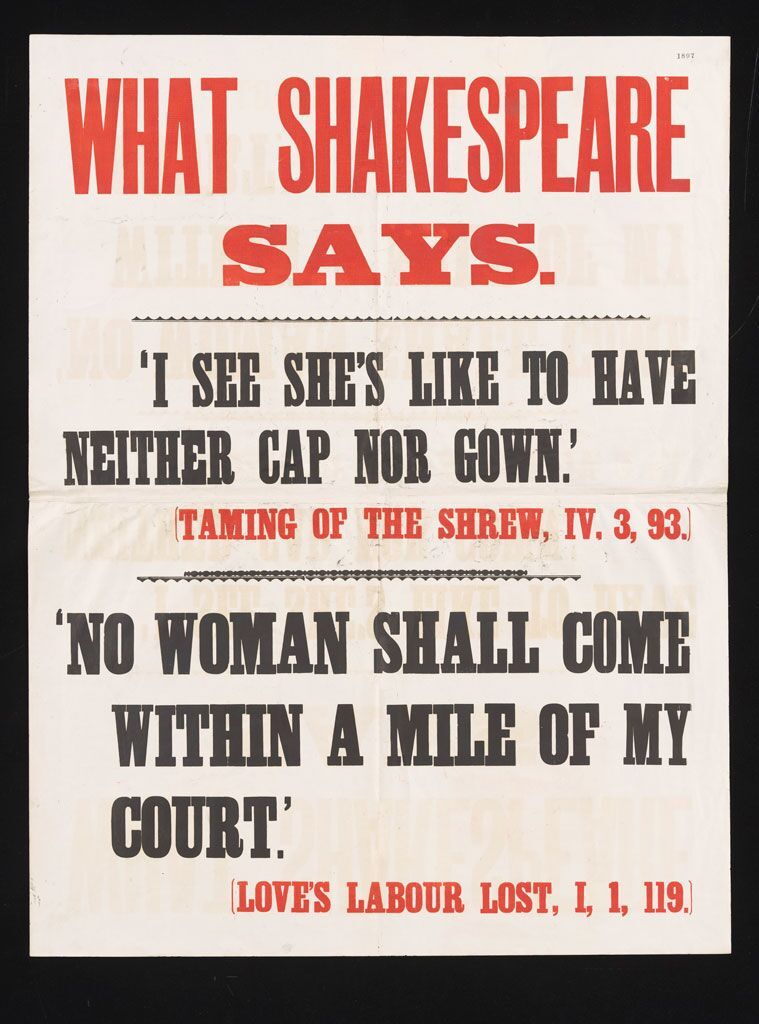
Despite the vitriol women at Cambridge encountered, the earliest females at Cambridge found their own means of resistance.
In 1880, they organised the signing of a 400-page petition demanding women’s degrees, set up new student societies for women; and found opportunities for women to lecture. The pages of the petition will line the walls of the exhibition at the University Library.
Sometimes, resistance also meant finding ways of avoiding the rules that discriminated against women. Between 1904 and 1907, Trinity College Dublin offered women from Newnham and Girton the opportunity to travel to Dublin to graduate officially and receive a full degree.
The robes of one of the graduates, which have been stored for many decades, will be displayed in The Rising Tide.
Dr Ben Griffin, exhibition co-curator and Lecturer in Modern British History at Girton College, adds: “By telling the story of women at Cambridge, this exhibition also tells the story of how a nineteenth-century institution, which served mainly to educate young men for careers in the church, transformed itself into a recognisably modern university devoted to teaching and research.”
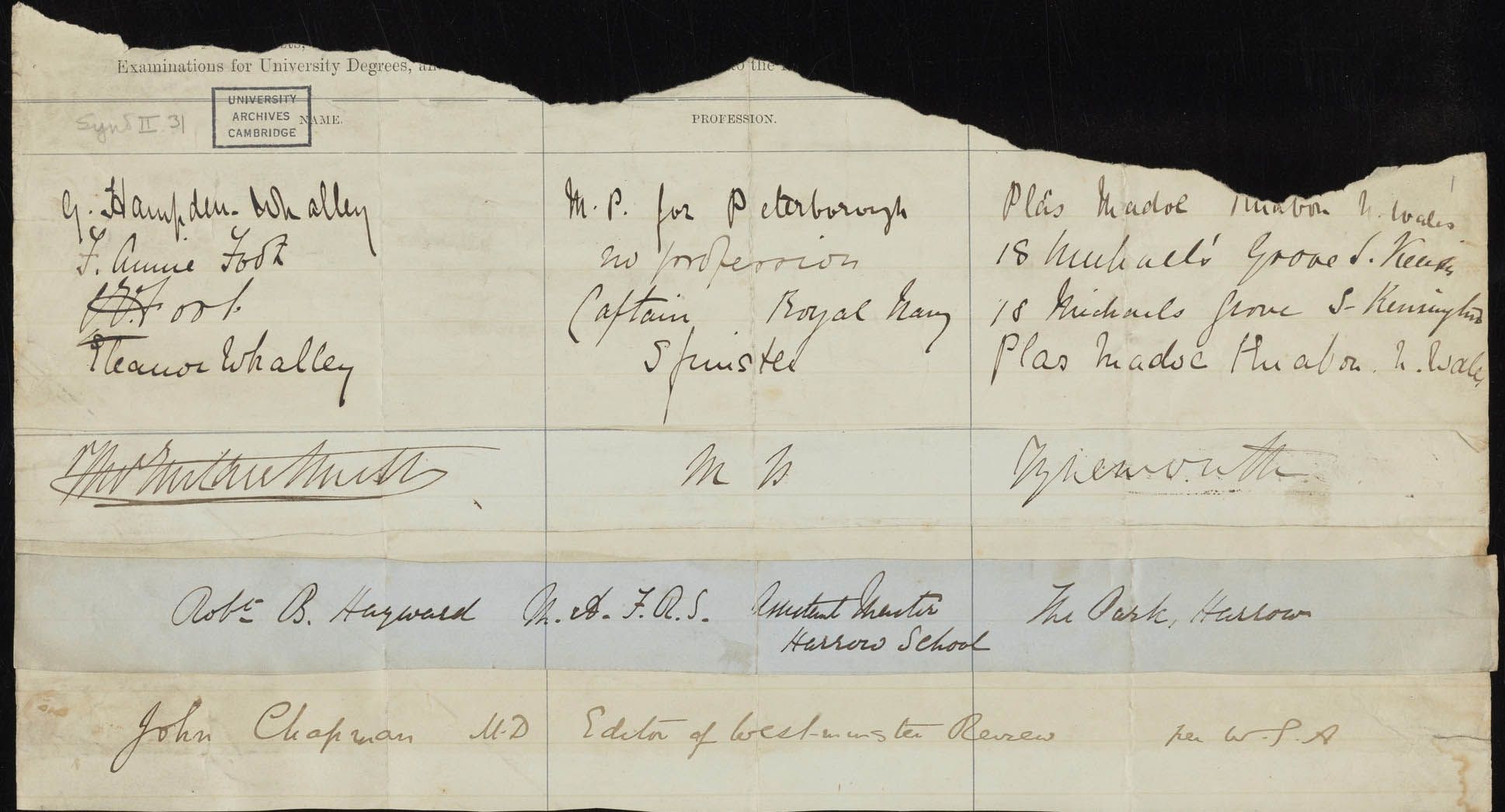
Although the first two women’s colleges at Cambridge - Girton and Newnham - had been founded in 1869 and 1871 respectively, women were still denied access to the University, to take degrees and to participate in its governance. In response, over 8,000 people signed this 1880 petition calling for change.
8,000 people signed this 1880 petition calling for women students to be allowed to take their degrees and participate in University governance.
In this first film of a four-film series, Dr Lucy Delap and Dr Ben Griffin, co-curators of Cambridge University Library’s The Rising Tide: Women at Cambridge exhibition, explore women’s historic struggle for equality at Cambridge in the face of mass and sometimes violent opposition.
In this first film of a four-film series, Dr Lucy Delap and Dr Ben Griffin, co-curators of Cambridge University Library’s The Rising Tide: Women at Cambridge exhibition, explore women’s historic struggle for equality at Cambridge in the face of mass and sometimes violent opposition.
Women at Cambridge:
Portrait Exhibition
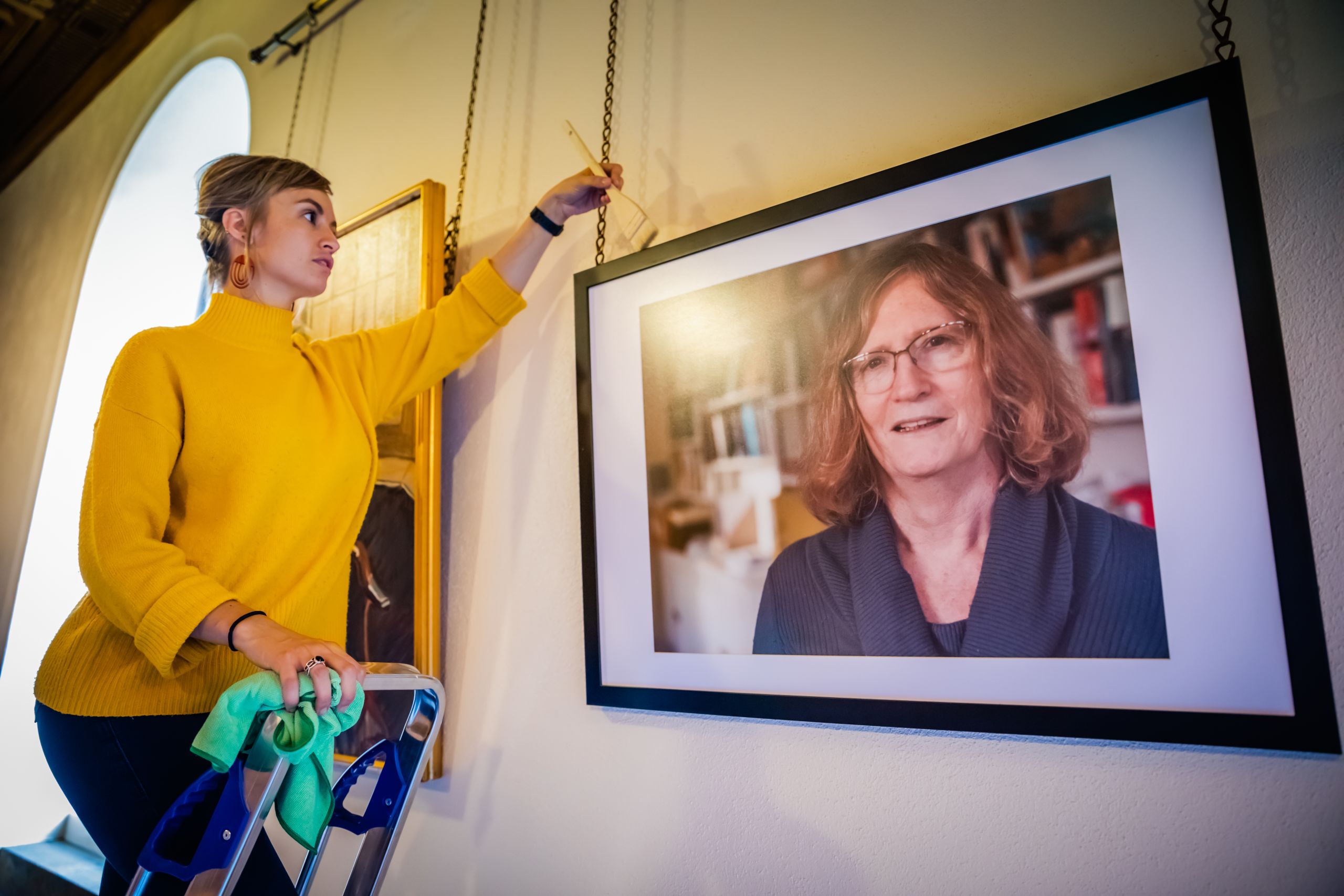
To celebrate the immense contribution of women to Cambridge's achievements over centuries, Cambridge University Library is proud to host a portrait exhibition formed of a mixture of historic and contemporary paintings and photographs, borrowed from Cambridge Colleges, as well as artists and institutions further afield, such as the National Portrait Gallery and the Museum of London.
Newly commissioned for the exhibition is a painting of female scientists working on lung stem cell research at the Gurdon Institute, by artist Caroline Walker.
A highlight of the display is a portrait of Baroness Hale of Richmond. The first female Justice and President of the UK’s Supreme Court, Baroness Hale became a household name in September 2019 when, as President, she delivered the Supreme Court’s unanimous verdict quashing Prime Minister Boris Johnson’s prorogation of Parliament.
An extraordinary Cambridge alumna, Baroness Hale studied Law at Girton College, graduating top in her class. She specialised in Family Law, has played a significant role in landmark reforms, and has been noted as a pioneer in raising awareness around the lack of diversity in the judiciary.
Another inspirational portrait on display is Dame Jocelyn Bell Burnell's, an astrophysicist who, as a postgraduate student at Murray Edwards College (then New Hall), discovered the first radio pulsars in 1967 – an iconic moment in 20th century astronomy.
Since her discovery, Bell Burnell has remained heavily involved in astronomy and science education and has become a role model and inspiration for female scientists around the world.
In 2018, she was awarded the Special Breakthrough Prize, in Fundamental Physics, from which she donated her entire £2.3 million prize money to the Institute of Physics to fund women, underrepresented ethnic minorities, and refugees to become physics researchers.
Nancy Lane Perham, the founding Director of the Women in Science and Engineering Initiative (WiSETI), is a successful cell biologist and a Fellow at Girton College since 1968.
The Rising Tide: Women at Cambridge exhibition takes its name from the influential 1994 Cabinet Office report The Rising Tide, which discussed the progression of women in science, engineering and technology – of which Nancy Lane Perham was Chair.
She was also a co-founder of the Athena project, an initiative established in 1999 to advance and promote the careers of women in science, engineering and technology (SET) in higher education and research.
Meanwhile, in October 2019, Sonita Alleyne became the first woman to lead Jesus College since its foundation in 1496.
Her appointment coincides with the College’s 40th anniversary of co-education and marks a record high in women senior leaders across the collegiate University. A recently commissioned photograph of Sonita features in the display.
The story of Mary Paley Marshall (1850 – 1944) is one of firsts; in 1871, Mary was awarded a scholarship to become one of the first five students at Newnham College, Cambridge’s second women’s college, following the establishment of Girton in 1869.
In 1874, she was one of the first two women to take the University’s Moral Sciences Tripos and, although women were unable to receive degrees at this time, this was a true milestone in the history of women’s education.
In 1875, Mary became the University’s first residential female lecturer in economics and, in 1890, she was one of the first 11 members of the Ladies Dining Society, a private women's discussion club that championed women’s education and campaigned to grant degrees to women at Cambridge.
Despite her activism, Mary’s husband was publicly opposed to women's education and wrote pamphlets and letters objecting to a mixed university. Mary, however, remained unfazed by her husband’s opposition.
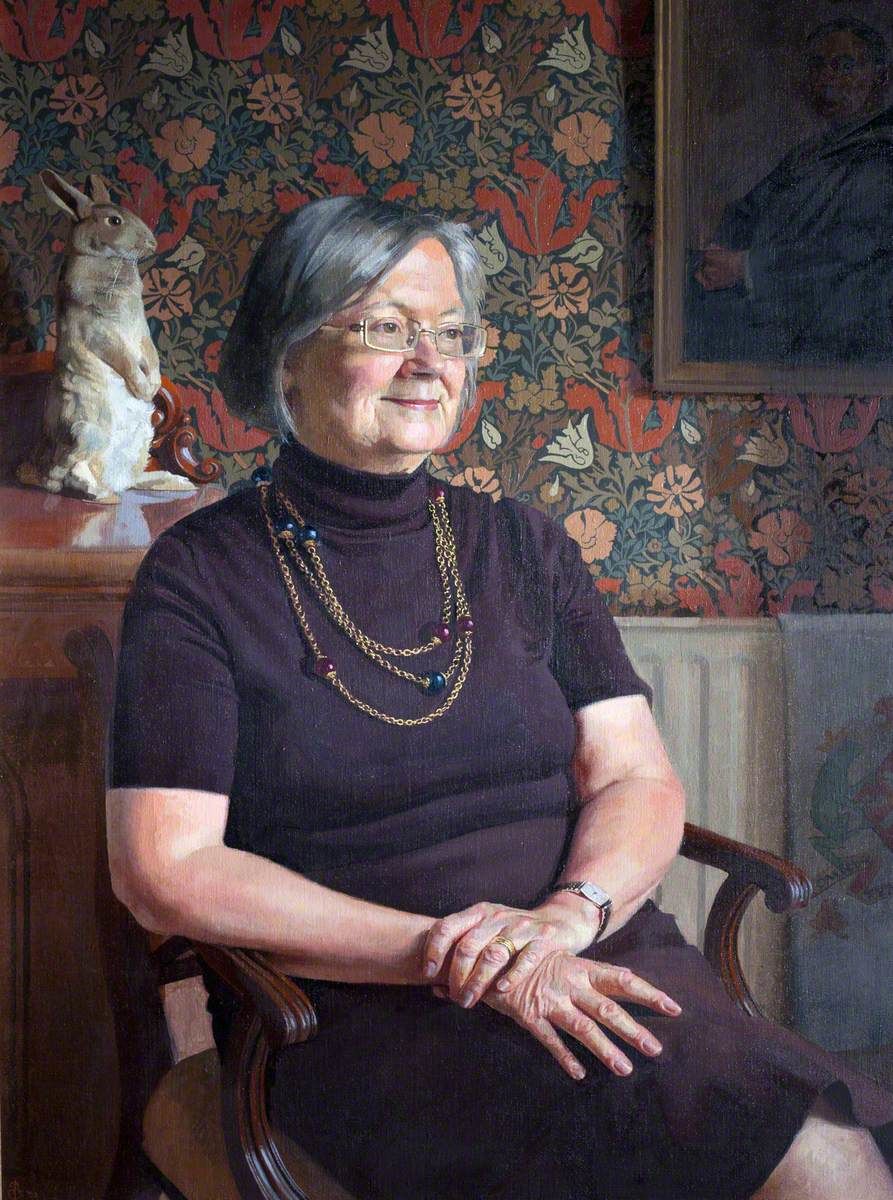
Baroness Hale. Credit: The Mistress and Fellows, Girton College, Cambridge.
Baroness Hale. Credit: The Mistress and Fellows, Girton College, Cambridge.
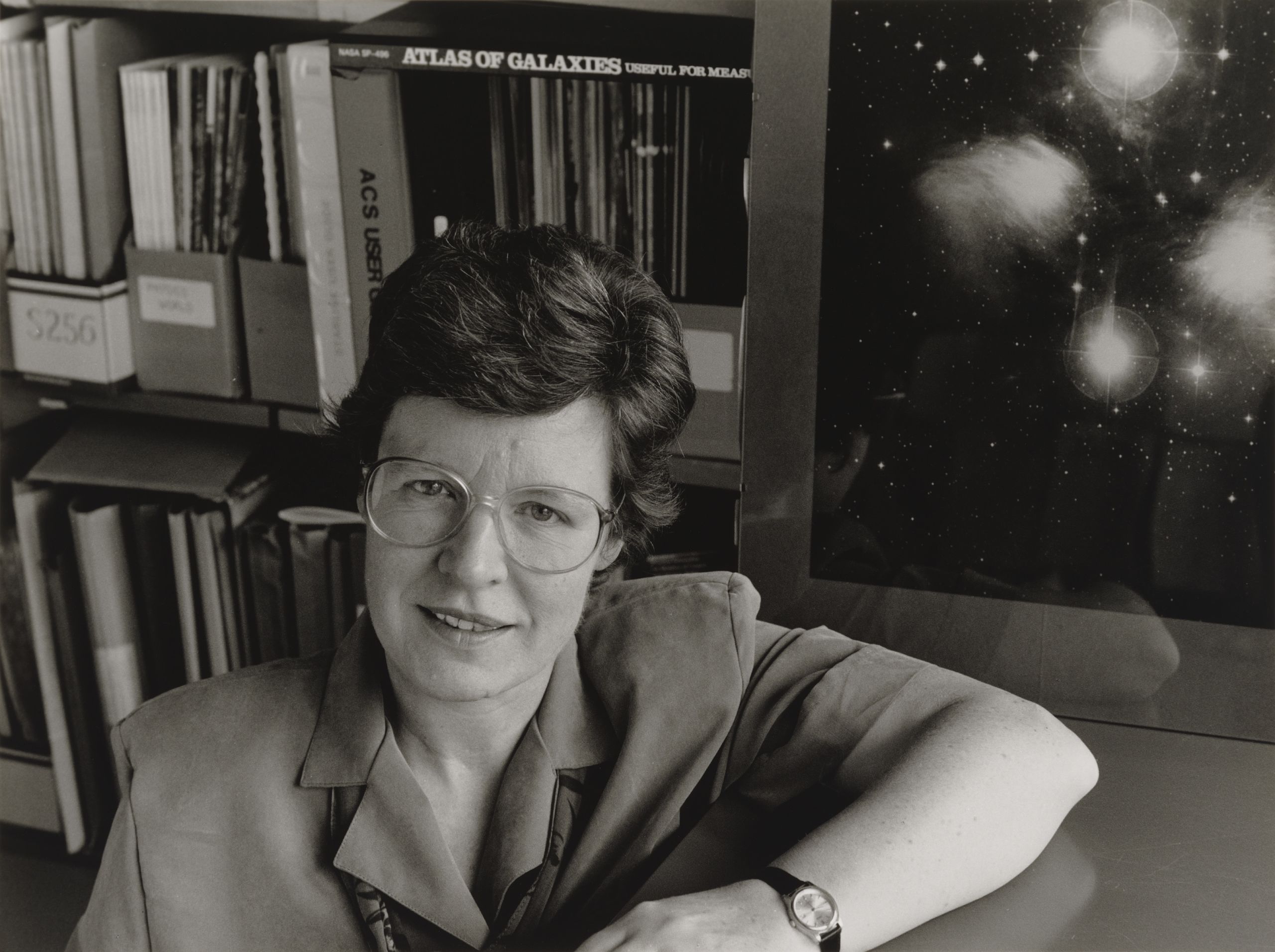
This portrait of Burnell was included in Julia Hedgecoe’s book, Educating Eve: Five Generations of Cambridge Women, comprised of portraits of outstanding Cambridge alumni. Courtesy of the artist.
This portrait of Burnell was included in Julia Hedgecoe’s book, Educating Eve: Five Generations of Cambridge Women. Courtesy of the artist.
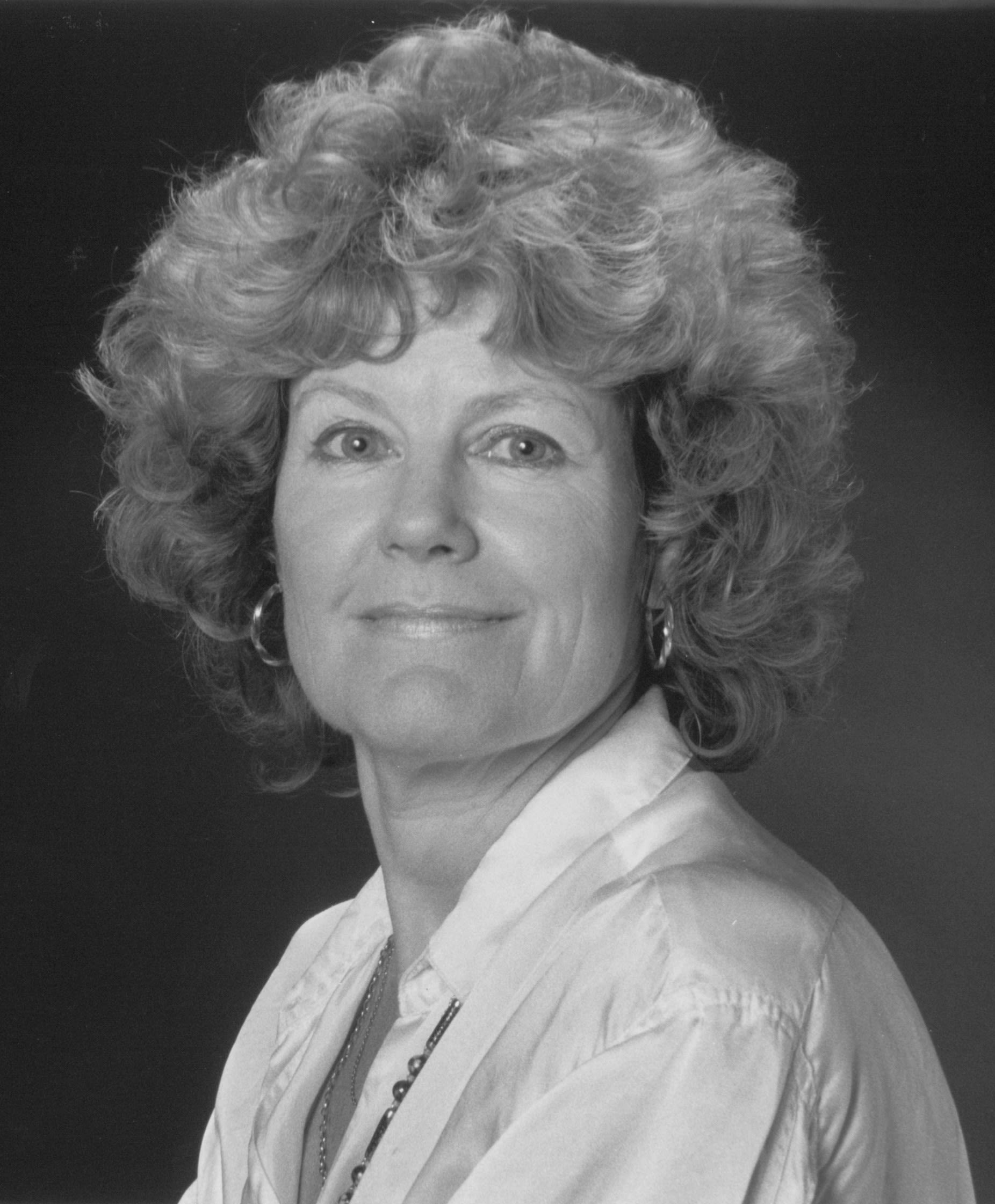
Nancy Lane Perham. Courtesy of the Mistress and Fellows of Girton College, Cambridge.
Nancy Lane Perham. Courtesy of the Mistress and Fellows of Girton College, Cambridge.
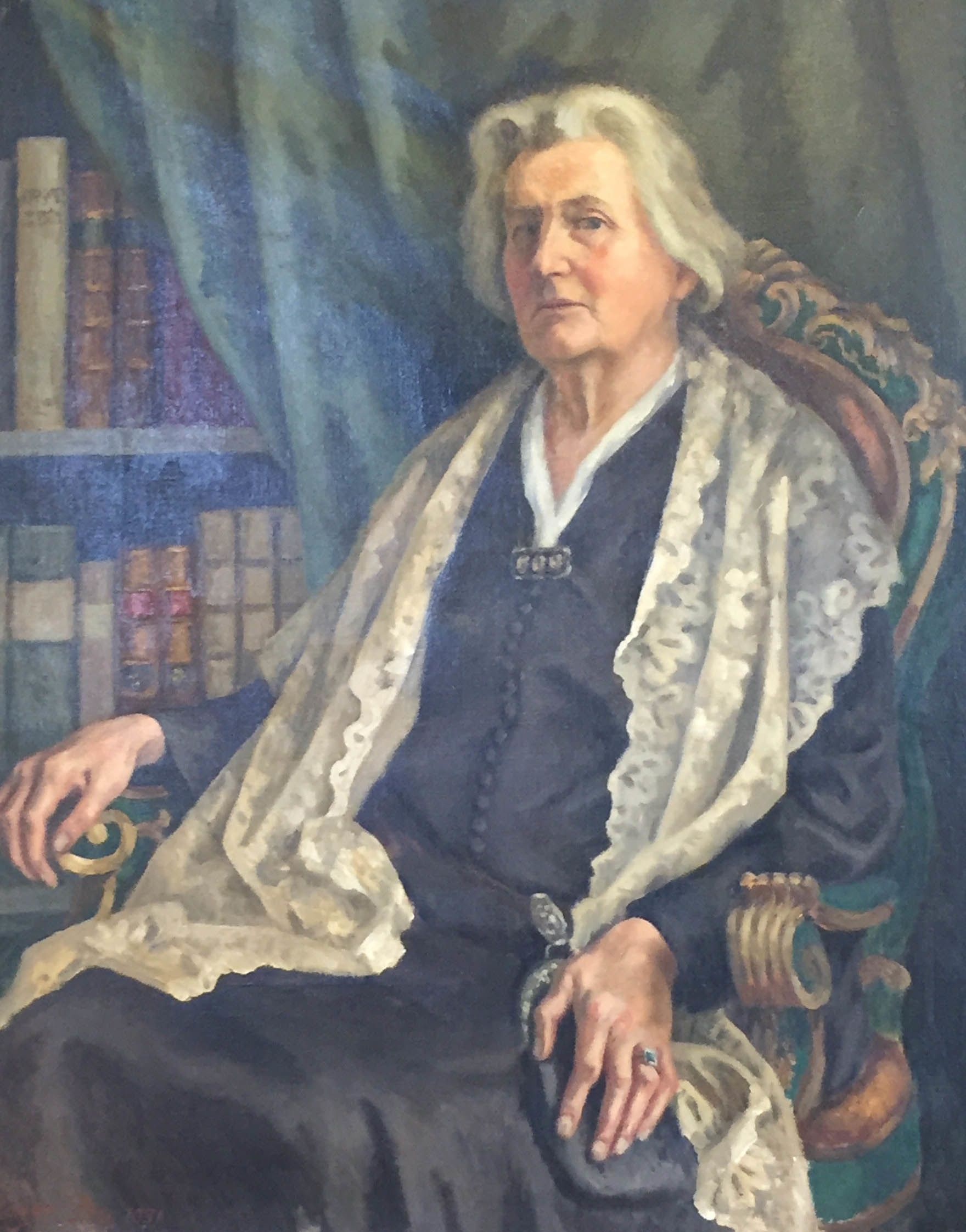
Mary Paley Marshall. Courtesy of the Marshall Library, University of Cambridge.
Mary Paley Marshall. Courtesy of the Marshall Library, University of Cambridge.
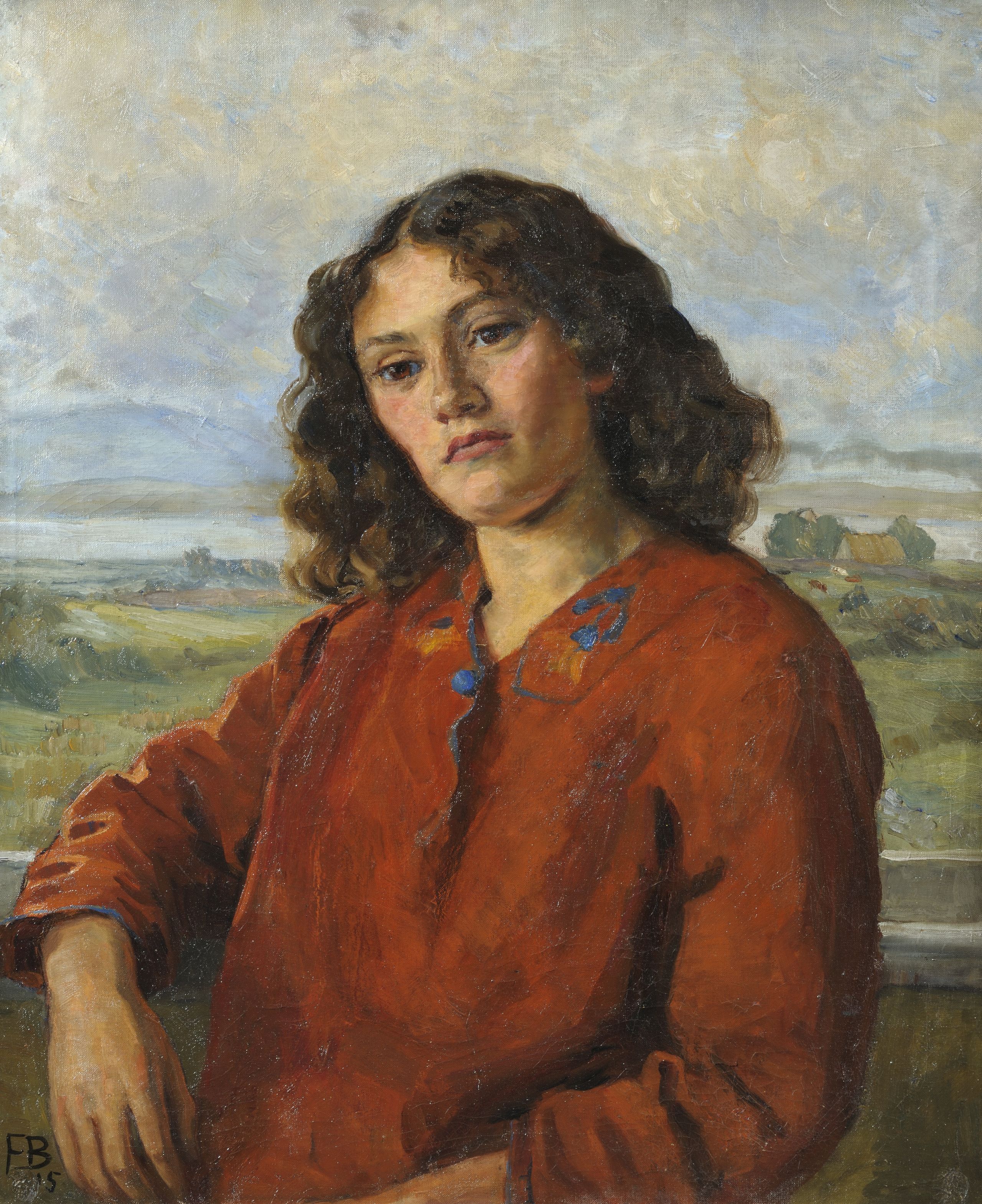
Lettice Ramsay was a British photographer who took portrait photos of the Bloomsbury Group, travelled the world, and ran a successful photography studio in 1930s Cambridge after studying philosophy at Newnham College. Courtesy of Newnham College, Cambridge.
Lettice Ramsay was a British photographer who took portrait photos of the Bloomsbury Group, travelled the world, and ran a successful photography studio in 1930s Cambridge after studying at Newnham.
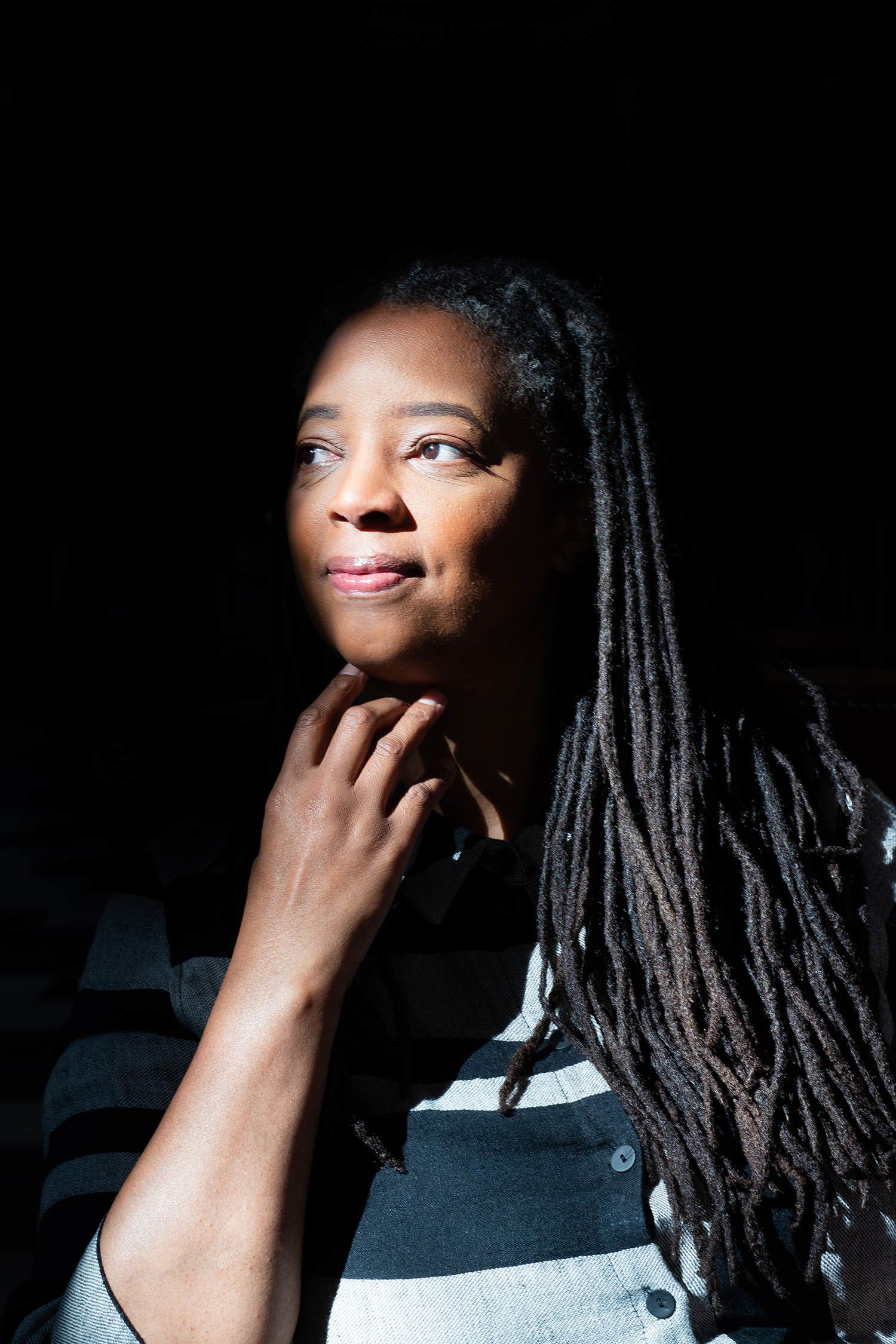
New Jesus College Master Sonita Alleyne, whose appointment marks a record high in female senior leaders across the collegiate University. As of October 2019, 15 of the 31 Cambridge Colleges were headed by females. Credit: Nick Saffell.
New Jesus College Master Sonita Alleyne, whose appointment marks a record high in female senior leaders across Cambridge University. Credit: Nick Saffell.
"The women who came before us, represented in The Rising Tide, are part of our inheritance. They stood up, found their voices, challenged, fought, bent the rules, broke the rules, made new rules. Founded whole new colleges in their determination to make this University one where they – where we – could belong and succeed."
Dr Jessica Gardner, Cambridge University Librarian
